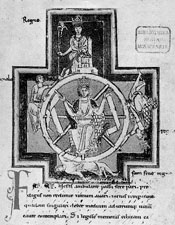Carmina Burana: The Wheel of Fortune
, translated by Kline, A. S. (contact-email)
Carmina Burana, dated between the 11th and 13th centuries, is a medieval manuscript comprising approximately 250 poems and dramatic texts. Mostly written in Latin, it also includes sections in Middle High German and Old Provençal. Compiled likely in Austria or Germany, it was discovered in the Benediktbeuern Monastery in Bavaria. The Wheel of Fortune serves as a recurring motif throughout the compilation, symbolising the capricious nature of fate and the instability of human circumstances. Themes explored include love, morality, satire, and the ephemerality of life. The work is notable for its varied metric forms and the blending of sacred and secular subjects. Carl Orff adapted portions of Carmina Burana into a cantata in 1936, which has since become one of the most performed pieces of classical music. The manuscript offers significant insights into medieval European culture and thought.

Kline, A. S.
Support Open-Access:
Your contribution keeps our classical translations available to all. Every dollar helps support classics education and funds the expansion of our catalogue. Value what we do? Donate now.
File Downloads:
© Copyright, All Rights Reserved. This work may be freely reproduced, stored and transmitted, electronically or otherwise, for any non-commercial purpose. Conditions and Exceptions apply.